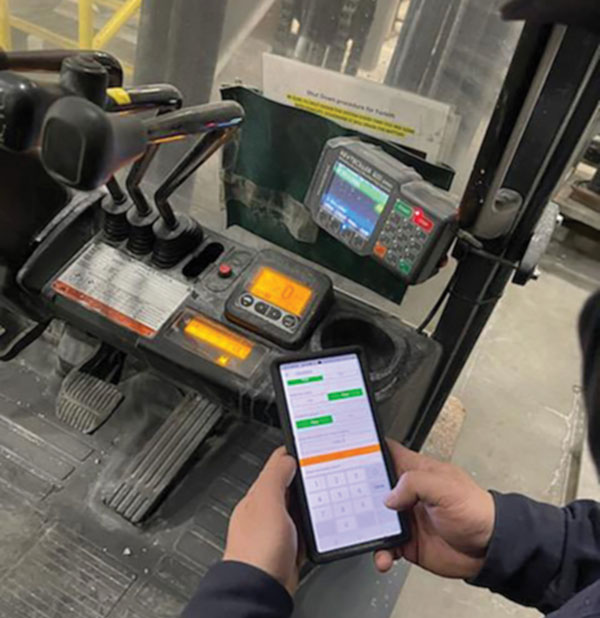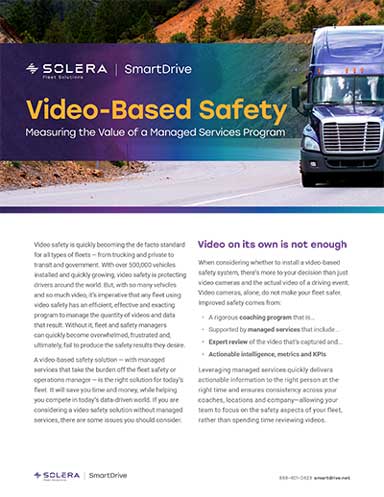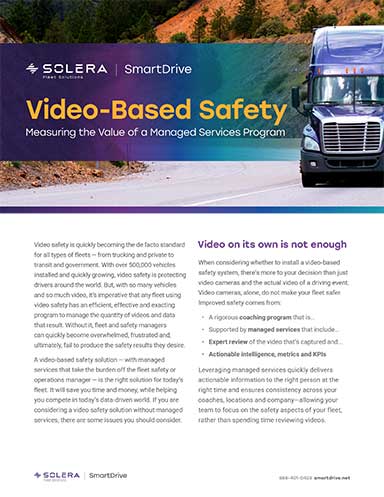To improve safety, first assess the present
Here’s why baselining your current lift truck safety processes and equipment as well as assessing layout and material flow patterns is an important first step toward ongoing improvement.
Some lift truck technologies are widely considered to be supportive of improved fleet safety. For example, virtual reality (VR) training offers convenient, simulated training, while operator assist technologies on some newer lift trucks can sense and alert an operator to hazards. Telematics solutions generate data on impacts, incidents and fleet usage.
But back up from these technologies, and the real keys to improved safety are people-centered in nature, says Scott Carlin, chief sourcing officer for TFS, which offers turn-key fleet management services. Carlin says the overall aim should be to build a safety culture and not just among operators.
“Culture is everything,” Carlin says. “From the top down, culture is where safety begins. You can’t just put up a couple of signs that say safety first and expect that to be followed. You really have to live this discipline.”
Like any good improvement method, increasing lift truck fleet safety starts by assessing current practices, including what equipment is in place, training programs, signage and taking a close look at layout and material flow.
“The most important thing for us to do first is baseline what it is our customers do today, both at the corporate and facility levels. This is how we can help them put corrective actions in place,” says Carlin. “One of the first things we look at is: Do they have appropriate equipment for their application? We examine many things, like how old is the equipment, do they have telematics in place, and if so, how can we help them develop the right data from the telematics to drive change.”
TFS’s rack and automation experts are also involved to look at layout issues and identify changes that might help, like designated employee aisleways that trucks should stay out of and that associates on foot should stay in. “When you observe how product flows through the building, you understand issues such as intersections that are prone to congestion,” says Carlin.
This type of safety assessment process also examines the maintenance approach and safety checklist practices. Only after conferring with the customer does TFS make recommendations, so you have a joint agreement on changes, says Carlin.
The basic method TFS uses is to observe and assess, work jointly with the customer on improvement steps, devise measures for progress, and use those measures to improve over time. The actions taken to improve conditions will vary by company, adds Carlin, but common steps might include greater attention to safety checklist details, ensuring the right equipment is available for specific applications, or setting up telematics capability for the fleet. It can also help each site have a designated safety leader to monitor any KPIs and drive improvement.
Most telematics solutions offer a digital safety checklist, and also govern access control over who can operate the trucks. But over time, the big benefit is the insights over how the assets get used, says Carlin. “Learning about how the lift truck products are used has become very important,” he says. “Telematics allows us to take a quantifiable evaluation of the product and make better decisions with our customers. The technology in telematics allows us to work with customers to track operators’ activities, productivity and impacts. We then analyze the data to help customers with their overall fleet. This could include slowing trucks down in certain areas or moving heavily used lift trucks around to minimize hours and wear.”
One thing TFS consistently recommends is putting a process in place for getting feedback from operators or other associates on safety issues. While there needs to be executive buy-in on safety, open feedback from front-line workers is crucial, adds Carlin. “Allowing associates to have a voice to help conditions will empower them to speak up,” Carlin says. “It comes back to the idea of building your safety culture ‘on purpose’ with the right systems and processes in place that encourage people to do the right thing.”













